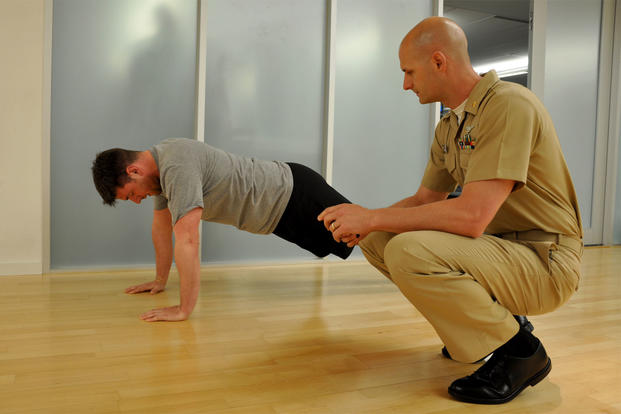There are many reasons why you should know how to tread water. Not drowning obviously is the most important, but if you are considering joining the military and especially special operations, you will be tested in these events.
Some of the tests are simply keeping your head above water for a specific time. Some tests are more challenging, requiring you to keep your hands out of the water or hold a weight. Some are done with SCUBA fins with a weight belt, tanks and hands out of the water. Regardless, many people need help with this skill.
Every year during June for the past 20-plus years, I have been a guest PT instructor at the Naval Academy Summer Seminar for more than 2,000 U.S. Naval Academy/high school candidates.
The high school seniors come from all over the United States to experience a week of Naval Academy life. They start the day with physical training before 6 a.m. and continue a long day of events that include classroom lectures, log PT and obstacle course racing, as well as getting treated like a plebe for an evening. It is a good taste of what Naval Academy life is like.
People have heard about the Tuesday morning workouts, where I lead a group of 800 students through a variety of exercises and tips to master PT tests. Here is a question from a candidate attending a later session this summer:
"Mr. Smith, I was wondering if you are going to lead the PEP (Physical Education Program) during USNA Summer Seminar this year (2017)? If so, what kind of exercises/reps should I be preparing for?"
Future Midshipman Adams.
Good luck to you and your application process as you enter your high school senior year. The physical training is not that difficult if you work out regularly. However, if you do not, the physical events could be very challenging to you, and you may need to stop or, worse, get injured doing things your body is not used to doing. Here is what I did with the most recent Summer Seminar class:
Run a half-mile to the PEP field.
Warmup:
- 10 push-ups, 10 squats, 100-meter run
- 20 push-ups, 20 squats, 200-meter run
- 30 push-ups, 30 squats, 300-meter run
- Then a 400-meter run. Light stretch throughout each set.
Death by Push-ups
Stay in the up position of the push-up for 10 minutes. Do not drop your knee, but you can shake out an arm when in a side plank position. Every minute, do a step of the pushup pyramid -- increasing by one each minute. So the workout looks like this:
- 1 push-up -- stay in plank pose for the remainder of one minute. Then
- 2 push-ups -- continue in up push-up position or plank pose nonstop for 10 minutes, increasing the push-up repetitions by one each minute:
- Minute 3 -- 3 push-ups
- Minute 4 -- 4 push-ups ... up to Minute 10 and 10 push-ups. That equals 55 push-ups.
Core exercises
- Sit-ups: Focus on a pace of 20 repetitions in 30 seconds
- Flutter kicks: 20
- Sit-ups: 20 in 30 seconds
- Leg levers: 20
- Sit-ups: 20 in 30 seconds
- Scissors: 20
- Sit-ups: 20 in 30 seconds
- Stretch stomach
Cooldown -- easy pace:
- 30 push-ups, 30 squats, 300-meter run
- 20 push-ups, 20 squats, 200-meter run
- 10 push-ups, 10 squats, 100-meter run
- Light stretch throughout each set.
Burpees for the remainder of time -- usually about 10 per minute pace.
Run a half-mile back to the dorm.
This is a typical workout. The other days, midshipmen will run the PT, and you may have a future Marine or Navy SEAL up there leading you, challenging you to perform many more challenging exercises and do higher repetitions.
Two things you need to get good at doing:
- CFA -- Candidate Fitness Assessment events: Pull-ups, push-ups, crunches, shuttle run, basketball throw, one-mile run -- More info on CFA
- PFT -- Physical Fitness Test events: push-ups for two minutes, crunches for two minutes, 1.5-mile run
Getting into the military academies is tough academically, and you typically need to have played sports in high school or other activities that allow you to grow and have leadership experiences. It is not just physical, but being in shape when you arrive makes for a less stressful plebe summer.
Stew Smith is a former Navy SEAL and fitness author certified as a Strength and Conditioning Specialist (CSCS) with the National Strength and Conditioning Association. Visit his Fitness eBook store if you're looking to start a workout program to create a healthy lifestyle. Send your fitness questions to stew@stewsmith.com.
Want to Learn More About Military Life?
Whether you're thinking of joining the military, looking for fitness and basic training tips, or keeping up with military life and benefits, Military.com has you covered. Subscribe to Military.com to have military news, updates and resources delivered directly to your inbox.




















